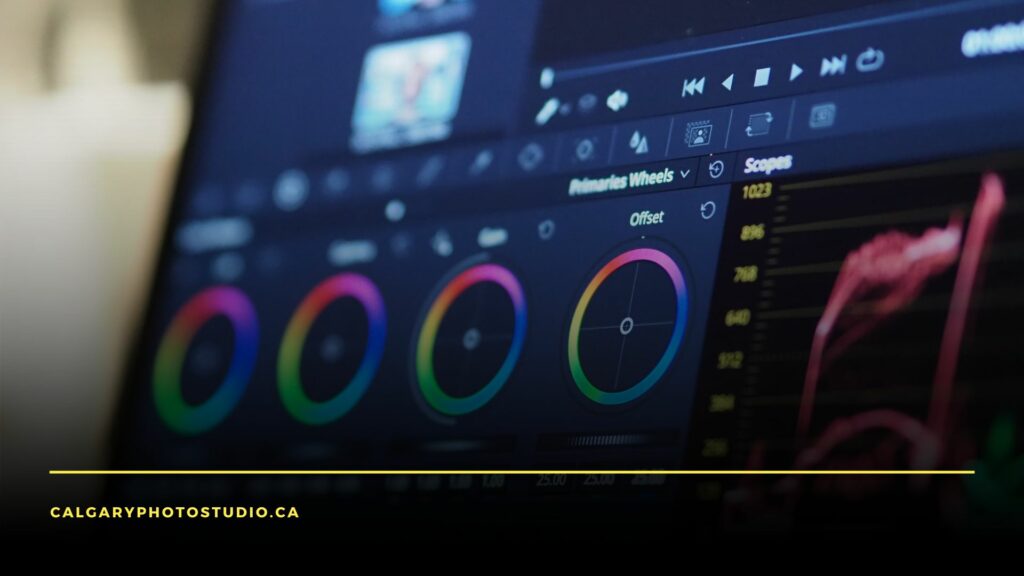Crafting a successful video is no simple task. It takes a mix of imaginative storytelling, precise technical skills, and thoughtful planning. Whether you’re looking to engage, educate, or inspire, each moment and every frame has the potential to make an impact.
Join us as we delve into the key stages of video production, from the initial brainstorming in pre-production to the final touches in post-production. We’ll share practical tips and valuable insights that can elevate your video projects from good to great.
Understanding the Video Production Process
Video production is a multi-step process. It’s divided into three main stages: pre-production, production, and post-production.
Each stage plays a crucial role in the final product. Pre-production involves planning and preparation. Production is the actual shooting of the video. Post-production includes editing and finalizing the video. Understanding these stages is key to successful video production.

Pre-Production: The Foundation of Video Success
Pre-production is the planning phase. It’s where you lay the groundwork for your video. This stage is crucial for video production success.
During pre-production, you’ll develop your story, create storyboards, and select your equipment. Each of these steps is vital. They help ensure a smooth production process.
Here are some key pre-production steps:
- Crafting your story
- Visualizing with storyboards
- Equipment selection
Crafting Your Story
A compelling story is at the heart of every great video. It’s what engages your audience and keeps them watching. Your story should be clear, concise, and compelling.
Think about your message. What do you want your audience to take away from your video? This will guide your story development.
Visualizing with Storyboards
Storyboards are a visual representation of your video. They help you plan out each shot. This is an important step in the pre-production process.
Storyboards allow you to visualize your story. They help ensure your video flows smoothly from one scene to the next.
Equipment Selection: Choosing the Right Tools
The right equipment can make a big difference in your video quality. It’s important to choose tools that fit your production needs. This includes cameras, lighting, and audio equipment.
Remember, the most expensive equipment isn’t always the best. It’s more important to understand how to use your tools effectively.

Creative Production: Capturing Your Vision
The production phase is where you bring your vision to life. It’s where you capture all the footage for your video. This stage requires careful attention to detail.
During production, you’ll focus on lighting, audio, and composition. You’ll also direct your talent and manage the set. These elements all contribute to the overall quality of your video.
Here are some key production steps:
- Lighting and audio techniques
- Composition and framing
- Directing talent and managing the set
Lighting and Audio Techniques
Lighting sets the mood of your video. It can highlight important elements and create depth. Understanding lighting techniques is key to enhancing video quality.
Good audio is just as important as good visuals. Clear sound makes your video more professional. Use microphones and sound editing tools to capture and enhance audio.
Composition and Framing for Impact
Composition and framing create visually appealing shots. They guide the viewer’s eye and highlight key points. Use techniques like the rule of thirds and leading lines to create impact.
Framing also involves choosing the right camera angles. Different angles can create different effects. Experiment with various perspectives to add interest to your shots.
Directing Talent and Managing the Set
Directing talent involves guiding your actors or interview subjects. Good direction helps them deliver their lines naturally. It also helps them convey the right emotions.
Managing the set is about keeping everything running smoothly. This includes managing time effectively and adapting to unexpected changes. A well-managed set contributes to a successful video production.

Post-Production: Bringing It All Together
Post-production is the final stage of the video production process. It’s where you assemble and polish your footage. This stage is crucial for creating a cohesive final product.
In post-production, you’ll focus on editing, color grading, and sound design. These elements help to refine your video and enhance its storytelling.
Here are some key post-production steps:
- Editing for clarity and cohesion
- Color grading
- Sound design
Editing for Clarity and Cohesion
Editing is where you arrange your footage to tell your story. It’s about choosing the best shots and arranging them for maximum impact. Good editing ensures your video is clear and cohesive.
Editing also involves adding transitions and effects. These can help to smooth the flow of your video. They can also add interest and enhance your storytelling.
Color Grading and Sound Design
Color grading is about adjusting the colors in your video. It can enhance the mood and tone of your footage. It’s a subtle art that can make a big difference to the final product.
Sound design involves adding music and sound effects. These can enhance the atmosphere and help to tell your story. Good sound design can make your video more engaging and memorable.
Leveraging Video Analytics for Success
Video analytics can provide valuable insights into your video’s performance. They can help you understand how your audience is engaging with your content. This data can guide your future video production efforts.
By tracking key performance indicators (KPIs), you can measure your video’s success. This can help you identify what’s working and what needs improvement.
Key Performance Indicators (KPIs) to Track
There are several KPIs you can track for video content. These include view count, watch time, and engagement rate. These metrics can provide insights into your video’s reach and impact.
Another important KPI is the click-through rate (CTR). This measures how many viewers click on your call-to-action. A high CTR indicates that your video is effectively driving action.
Using Analytics to Improve Future Productions
Video analytics can inform your future video production efforts. By analyzing your video’s performance, you can identify areas for improvement. This can help you create more effective videos in the future.
For example, if your videos have a low watch time, you might need to work on your pacing. Or if your CTR is low, you might need to improve your call-to-action. By using analytics, you can make data-driven decisions to enhance your video production success.
Continuous Improvement and Adaptation
In conclusion, successful video production is a continuous process of learning and adaptation. By applying these video production tips, leveraging analytics, and embracing creativity, you can enhance your video production success. Remember, every video is an opportunity to improve and better connect with your audience.

FAQ: How Does AI Enhance Real-Time Video Production and Post-Production?
Q: How is AI transforming real-time video production and post-production for better cost-effectiveness and quality?
A: Artificial Intelligence (AI), especially powered by neural networks and machine learning, is revolutionizing video production and post-production in several ways. In real-time video production, AI enables advanced features like object tracking and face recognition, enhancing the framing and focus for high-quality outputs. These AI capabilities ensure that even with a varying number of people in a scene, the camera adjustments and focus are dynamically optimized.
During post-production, AI accelerates the editing process through efficient video content analysis, enabling quick identification and categorization of footage based on content, which aids in better project management. AI-powered tools leverage computer vision to refine color grading and sound design, ensuring that each frame meets high-quality standards.
Moreover, in marketing strategies, AI facilitates the analysis of social media engagement and viewer reactions through real-time data, helping creators understand the impact of their content in the real world. Long-term, the integration of AI in video production promises not only cost-effectiveness but also a substantial improvement in the creative workflow, allowing more focus on creativity and less on the tedious aspects of production processes.





